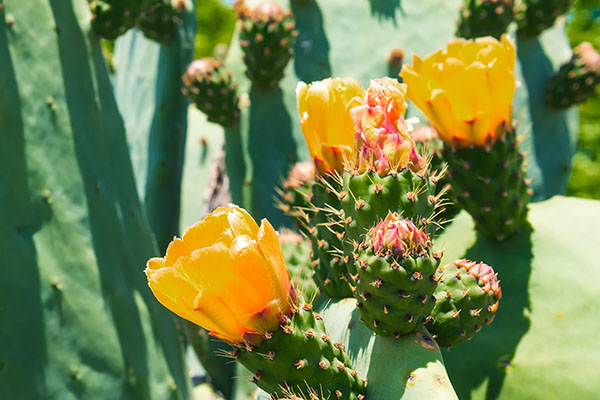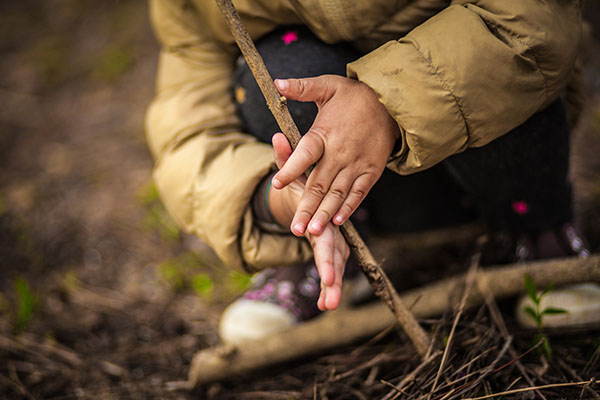
Despite the region's arid climate, there are several edible plants that can grow there. Here are eight sources of sustenance you can forage if ever you find yourself hungry in the desert.
Agave
Native to Mexico and the Southwest, agave is a tough desert plant that has provided sustenance for hunters and gatherers for thousands of years. Its flowers, flower stalks, leaves and seeds are edible. Some of the species also produce nectar, which has become a popular natural sweetener.
Native Americans knew how to extract food, fiber, soap, thread and medicine. They even made musical instruments from it, such as the traditional Apache fiddle. Agave plants also act as a natural resource for desert wildlife, providing food and water. The plants provide shelter for animals to hide, birds to nest and small mammals to nibble on seeds in the shade.
Cactus
You can find these three varieties of cacti in the Sonoran Desert.
- Desert Christmas cactus – The small berries produced by this plant, which have a sweet, strawberry-like taste, contain vitamin A and vitamin C.
- Saguaro cactus – This large cactus grows edible flowers in the early spring, and bears edible fruit over the next couple of months. Its spongy interior is an excellent water source at all times of the year.
- Prickly pear cactus – It has three different sections, all of which are edible. The spiky leaves or pads can be eaten like a vegetable; the flowers can be used in salads; and the pear can be eaten just like a fruit. All three parts of the prickly pear cactus are high in water, sugar and fiber. (Related: Drought-resistant cactus pear could become a sustainable food and fuel source, new research shows.)
Desert chia
Desert chia is the native version of store-bought chia, which is a cultivated seed originally from Central America and is popularly considered a "superfood" for its wide range of nutritional benefits.
The entire chia sage plant is edible. Its seeds are nutritious and can provide a short-term energy boost. The plant’s flowers and leaves can be eaten raw or used to season soups and stews.
While time-consuming to harvest, desert chia is an important food resource that can significantly contribute to a person’s daily food needs in an emergency. It can be cultivated using only the scant rain that falls in the Sonoran desert uplands, making it an irreplaceable crop.
Desert hackberry
Desert hackberry, also called spiny hackberry, is a common shrub that grows in Southern Arizona and South Texas, in parts of both the Sonoran and Chihuahuan deserts. Its tasty orange berries are produced in the fall and are high in phosphorus, calcium and protein.
Desert hackberry provides important resources for wildlife, including browse for deer, shelter for quail and other ground-dwelling birds, nectar for butterflies and pollinators, and fruit for numerous bird species. A few butterflies and moths even use desert hackberry as a host plant.
Netleaf hackberry
Netleaf hackberry is a water-loving tree that grows next to rivers and springs in middle elevations across the Southwest. Its small red berries don’t look like much at first glance, but they’re a calorie-packed staple food that can feed people for long periods in an emergency.
Netleaf hackberries have protein, oils, and sugar (carbohydrates), everything a person needs to survive short-term. They also preserve readily and are available on the tree for a long time, up to five months.
Mesquite tree
Yes magazine noted that mesquite trees have been the most important of all wild food plants ever foraged from the Sonoran desert in and around the Tucson Basin. Over the millennia, they consistently provide more calories to the indigenous inhabitants of the Tucson Basin than corn had ever offered to humans in such a desert climate.
You may recognize this tree’s name for its use as a seasoning. Mesquite trees also produce pods filled with beans that look like peas. The beans can be roasted and ground into flour.
The hard wood of the mesquite is not only an important fuel, but also the main source of lumber in the desert. Mesquite timbers were the major supports for houses and ramadas built by native desert dwellers. With the introduction of livestock by the Spanish, mesquite timber was used for fencing and corrals, according to the National Park Service.
Screwbean mesquite tree
Screwbean mesquite is a small tree native to Southern Arizona, where it grows along rivers in the Sonoran Desert. It has edible pods (beans) that were an important food source for Native Americans.
Virtually every tribe that lived near these wonderful trees used them for food. In fact, in their classic work "Pima and Papago Indian Agriculture," botanists Edward Castetter and Willis Bell list screwbeans among the four most important wild-harvested foods of the Pima people, especially in years of "inadequate water supply or crop failure from other causes." They also mention that the Maricopa people considered both regular mesquite and screwbean "more important than maize."
Wolfberry
Wolfberry, a cousin of the Asian goji berry, is one of the most common shrubs in the Arizona desert. While wolfberries are edible when raw, their taste varies from species to species. Some species have more bitter fruit, while others taste like sweet tomatoes. Both bitter and sweet berries are often found on the same bush.
Historically, wolfberries were usually cooked or dried before being eaten, as raw berries can temporarily stain the teeth. They were used to make juice, preserves or a thickener was added and they were cooked into a type of porridge.
Wolfberry is a great addition to a native "food forest," and pairs great with mesquite. It is drought tolerant and difficult to kill once established. It works great as a privacy screen, and will also bring in lots of pollinators like hummingbirds and white-lined sphinx moths.
Visit EmergencyFood.news for similar stories.
Watch this video about the prickly pear cactus fruit.
This video is from the Cahlen channel on Brighteon.com.
More related stories:
Know the trees and plants that grow easily in a desert garden.
6 Edible succulents to grow on your balcony.
In praise of the prickly pear: Let thy food be thy medicine.
Sources include:
Please contact us for more information.






















